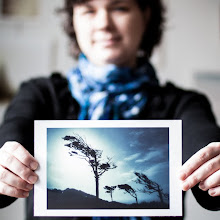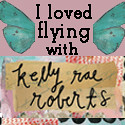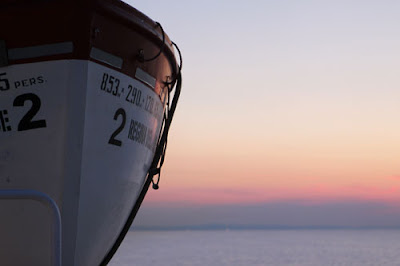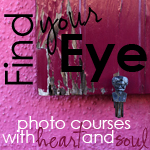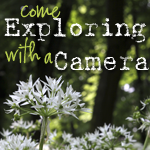Monday, February 28, 2011
The View from the Top
Last week, when looking for a photo with words on it to link in to a Shutter Sisters prompt, I realized that I never posted this. I showed the image before the words some time ago, but in some ways the words transform this photo. They are a reflection of the emotion of my son in silhouette. On top of the world!
I'm off on vacation this week, but I wanted to share this image as another way to Capture the Sky. Creating a blank space in your photos with a clear sky is a great way to "reserve" the space for later use, like the addition of the quote. It's also interesting to see the tones you can get from the sky when an image is converted to black and white. The sky did not appear this dark in the color version, but it provides a perfect place for white text.
Labels:
Alpe di Siusi,
black and white,
Italy,
silhouette,
sky
Sunday, February 27, 2011
Sunrise Sky
It's amazing how many sky images are popping into my head, since I wrote the Exploring with a Camera: Capture the Sky post on Thursday. This one is from an early morning walk in Parco di Monza. I remember the morning well, I had to get up early to take Brandon to school for a field trip and started my walk just before sunrise. It was early, but the time paid off in the form of a gorgeous sunrise, and one more beautiful sky to share with you.
Stop by Ashley Sisk's blog Ramblings and Photos today, to visit all of the photographers who are linking in their "Capture the Sky" images as part of her Scavenger Hunt this week. Thanks Ashley, for including Exploring with a Camera! I look forward to seeing all of the sky images the participants have captured.
Labels:
clouds,
Italy,
Parco di Monza,
pink,
silhouette,
sky,
sunrise
Friday, February 25, 2011
An Artful Arrangement
I am musing on "still life" over at Mortal Muses today, head over to see a companion photo to this one. This theme encouraged me to photograph two of my favorite foods of Italy - Parmigiano Reggiano cheese and Amarone della Valpolicella wine. Yum. Both of these items will be much harder to find and quite a bit more expensive when we return home, so I am enjoying them as much as possible now.
Not only that, but I was able to capture this still life in our beautiful kitchen. Aren't those marble countertops nice? The apartment we're living in here has much nicer finishes than our home in Oregon, and we've gotten a little spoiled.
It's nice to capture these little memories in an artful and intentional way. I'm on a quest to photograph "what I'll miss" in the next few months before we move back to the US. I'm going to be a blubbering mess as we get closer to actually moving - we have just over four months left!
Subconscious Choices
The other night as I was falling asleep, this image popped into my head as the next in my series. I'm not sure I completely agree, but I'm also not sure you can argue with your subconscious mind. It does as it wills. This image is from Lugano, Switzerland in December 2009. The odd thing is, I haven't thought about it twice since I took it. I never edited it or even noticed it in my photo review.
Here's my internal debate about whether to include this in the series:
- It is definitely a vehicle with groceries.
- Not really any crates involved .
- It's not red, but there is red in the photo.
- It's not in Italy but it's in the Italian speaking part of Switzerland. But maybe the series is Europe?
Since this series seems to be evolving on its own, I guess I just have to follow along and see where it leads.
What do you think? Is it included or not? Here you can view images one, two and three.
I am off on vacation for the next week. Again. I know, it's crazy, but true. Tonight we go to Venice for one night, because it's Carnevale! This was one thing that I didn't want to miss in my No Regrets Year. Sunday we fly to Sicily for the rest of the week since Brandon has the week off of school. From what we hear, it's completely different from Northern Italy so it will be interesting. I have a few posts ready for you over the next week, and I'll be back with more pics in a little over a week. Who knows, maybe more in the series will appear.
See you later!
Labels:
Lugano,
market/wheels,
series,
store display,
Switzerland
Thursday, February 24, 2011
Exploring with a Camera: Capture the Sky
Welcome to Exploring with a Camera! Today I'm going to talk about capturing the sky. The sky is a subject that I've been fascinated with over the last few months, and I wanted to share what I've learned through observation. This post has a lot of information, and at the bottom you will find a link tool where you can link in your sky images to share too. I hope you will include any tips or personal observations you have, and increase the knowledge through the power of a community.
What is it about the sky that is so fascinating to me? I think because it is always changing, it is always interesting. The sky is never the same. The weather and clouds, the change in light from the time of day and season, and where you are located all have a dramatic impact on how the sky looks. Not only that, compositional choices, camera settings for exposure and post processing can have a big impact on the final appearance of the sky.
Here are a few things I've noticed...
Big Sky
The image leading this post off is an example of what I call a "big sky" image. Captured on the Oregon Coast in 2008, this wonderful sky has stuck in my mind. Why does the sky feel so big in this image? First, the photo was taken with a wide angle (short focal length), which enables the capture of a lot of space. Second, the horizon is positioned low in the image, so the the sky is dominant. Finally, you can't ignore the effect of the cloud formation. The formation itself leads you into the distance and gives more depth. I want to mention that I did boost the color in this image, to emphasize the blue of the sky.
Here's another big sky image, from the Amalfi Coast of Italy. This image is similar to the Oregon Coast image, not only in subject, but in the focal length, placement of horizon, and interesting cloud formations.
Big sky images don't have to be of nature, they don't even have to have blue sky in them. This image of London is a great example of a big sky in an urban environment. The same elements, wide angle and low horizon, apply to this image as well.
You don't have to have clouds to capture a big sky, that just seems to be what I am drawn to when I capture the sky. I hope some of you will share some cloudless skies in the link tool to provide examples.
How you choose to compose your image, horizontal (landscape) or vertical (portrait) orientation, has an impact on the feel of the sky. The image below, of the sky above Mt. Vesuvius in the Bay of Pompeii, emphasizes the height of the sky, rather than the width or expanse as seen in the previous images. The vertical format compresses the depth of the clouds coming toward the viewer to create height.
Here is another vertical example, above the Swiss Alps. I find it interesting how both of these images make the sky and the clouds seem so large compared to the massive mountains. Note that both also use a low horizon, to emphasize the sky.
Contrast
When capturing the sky, I like to have something to provide contrast to the sky itself, something to ground the image and provide a frame of reference. I find I ground my images with a piece of something real, even if I don't include the horizon. The tree in this image of sky from Madrid grounds the image, giving a little bit of context without changing the focal point.
And if you can have an interesting object help ground your sky, why not? This ancient Greek temple in Paestum, on the Amalfi Coast south of Naples, both grounds and provides a point of interest to the fabulous sky on this day.
Slice of Sky
You don't always have the luxury of having a broad view of the sky to capture. You can create equally interesting sky images by catching a slice of the sky. These images are trickier for exposure, since you have a bright sky behind often significantly darker surroundings. My camera light meter will always choose an exposure in this situation that results in an overexposed sky, so I deliberately underexpose. This will make the foreground darker, but the correct exposure on the sky will make it the focal point.
Here is an image from an early morning walk in Parco di Monza. The slice of sky is the dominant feature in the image, but there is context in the foreground.
The image below comes from an especially frustrating evening walk in Lisbon. I could tell the sky was gorgeous with the clouds and golden light, but I couldn't get anywhere I could capture the broad vista I wanted. There were buildings all around, everywhere I walked. Instead of the big sky, I focused on a slice of sky. I like this image for the subtle details of the city in contrast with that gorgeous sky.
This slice of sky, the view when exiting from a Paris Metro station, gives me an interesting feeling of emerging. The looking-up perspective and escalator provide the context that changes the image from a standard sky shot to something more unique.
Reflections
The sky in reflection is gorgeous. Water reflections are a great tool to expand the impact of the sky in an image. In this image of the Venetian Lagoon, the reflected rays of light and colors of the sky continue the effect of the sky through more of the image.
I like this sky reflection from a modern Vespa for a couple of reasons. First, you can see that it has just rained from the drops on the mirror but the sky is reflected blue - things are clearing up. Second, a modern silver Vespa, while unique if you are from the US, is not all that interesting on its own. This sky reflection provides significantly more interest to the photo.
Backdrop
Finally, I want to explore the sky as a backdrop. Sometimes an image just doesn't work without the backdrop of the sky. It may not be the focal point, but an interesting sky in concert with other elements make a great image. This Parco di Monza sunset image needs both the sky and the tree in silhouette to work.
The focal point in this image is the life boat on the Ferry from Italy to Croatia, but the light in the sky is what makes it interesting. Can you imagine this without that light? I can, and it's not anything special in my mind's eye.
I have taken lots of images of church steeples and domes and monuments, and I can tell you this: the sky makes or breaks the shot. This evening sky in Split, Croatia makes all the difference between a ho-hum church steeple and a marvelous evening shot.
So, what skies attract you? Is it cloudless skies of blue? Stormy, threatening skies? I would love to see your images. Let's see how you capture the sky.
You can link in your images below, link will stay open until March 9. All images, recent or archive, are welcome. If you viewing this post in a reader, click here to come to the blog to see the link tool. I would love it if you would include an Exploring with a Camera button with your image, you copy and paste the button code from here.
Labels:
clouds,
exploring with a camera,
Italy,
Oregon,
Portugal,
reflection,
silhouette,
sky,
sunset
Tuesday, February 22, 2011
The Next in the Series
OK, here it is. The third in the series I showed you yesterday. This is another image found on the streets of Parma. I'm toying with calling this series "Classic Italian" but we'll have to see how it forms up. So far, it seems to be classic red vehicles on the streets of Italy near some sort of grocery crates. I don't know if that will hold, but who would have thought I would have three of these? We'll see what I find next week, when we visit Sicily.
The Exploring with a Camera: Breaking the Rule of Thirds link is now closed. The winner of the "C is for Camera" journal is Michelle, who goes by Pixie Dreams on Flickr. Congrats Michelle! Thanks so much to all who linked in, it was great to see all of these wonderful images. Don't forget to visit Tammy Lee Bradley at Bliss and Folly to see who won the Vintage Camera trio.
Come back tomorrow for the next Exploring with a Camera post, this week we're going to Capture the Sky!
Labels:
actions,
bicycle,
giveaway,
Italy,
market/wheels,
Parma,
photoshop,
red,
series,
store display
Monday, February 21, 2011
The Birth of a Series
Walking down a side street in Parma a couple of weekends ago, I happened on this lovely scooter. Of course I had to stop and photograph it, trying out several angles and compositions. Good thing it was a pedestrian zone, as I kneeled in the street for quite some time waiting for people to walk by so I could have an empty sidewalk. Every so often a scene like this will grab me, and not let go until it has its way with me. I'm always content to just follow the photographic muse when that happens.
When I got home, realization dawned on me. This image is the second in a series. Even though I didn't plan it, the photo is a perfect complement to Where Fiats Retire, an image from Sorrento I shared a couple of months ago. Similar processing (read below for details) and I was good to go.
I've never had this happen before, an image come along months later that so perfectly pairs with an earlier shot. And not just any previous shot, a favorite. I loooooove that Fiat shot. Guess what? I looked through my images and there is another shot in the series, which I'll share tomorrow. I wonder how many more are hidden there? Will they start appearing to me more often?
I guess this is how a series is born. I had no idea!
..............................
A quick reminder - today is the last day to link in to Exploring with a Camera: Breaking the Rule of Thirds. Tomorrow morning I'll draw for the winner of my giveaway as will Tammy at Bliss and Folly. Take a look at all of the wonderful images shared and be sure to link yours in too!
Photo processing in Photoshop Elements 8:
1. Cropped out some distracting info on the right edge.
2. Ran Pioneer Woman Seventies Action.
3. Added a Hue/Saturation Layer, and increased Hue to +5 and Saturation to +16 to increase the color of the scooter back a little bit brighter.
4. The wall behind the scooter was too similar in color to the scooter, competing for attention. I added another Hue/Saturation Layer with Saturation set to -27, and used a layer mask to only apply this change to the red wall.
Here's the original, straight out of the camera, for comparison:
Labels:
actions,
Italy,
market/wheels,
Parma,
photoshop,
scooter,
series,
store display,
street
Choosing your Context
Meet Stevie, my cat. You don't see him much on my blog because he's hard to photograph. He's either sleeping buried under a pile of blankets or moving non-stop following us around. If I see Stevie in an interesting spot or in good light and leave the room to get my camera, it is likely he follows me as I leave the room. Occasionally I get a good photo of him, like this one yesterday when I already had my camera in hand for other reasons. I got two shots, and then he was gone.
Yesterday I talked about context, and how photographers, or any artists really, choose the context they share in their art. Nothing is a reproduction of reality, it is always influenced by the artists point of view and what they wish to convey.
This photo is no exception. I could have focused in tighter on Stevie, but I wanted the context available around him. It is not just a portrait of Stevie, it is also a portrait of Stevie in our apartment in Italy. The green pot shows one of the colors of our kitchen, the radiator shows how we get our heat. The windows are typical Italian - simple glass and wood frame, with the turn handle to open. There are no screens on the window but you can see the wood bar, which we've guessed is to prevent small children or things on the window sill from spilling out the window when it is opened. Stevie sits on the window sill, made of marble. All of these things tell more of the story, not only "who" but "where" Stevie is.
I find it interesting to think about this concept of context. Some of the context in my photographs comes from split second decision making, some of it comes later with cropping and post-processing. How, and when, do you decide the context in your art?
Sunday, February 20, 2011
Mystery Revealed
As I went back in time in my photo file to find an image that would reveal yesterday's mystery, I came across this photo of the ceiling in the Gaudí designed Casa Batlló. Actually, I came across two photos of this ceiling, and I remember them well. At the time I was editing, there were two different compositions I processed similarly and liked, but I couldn't decide between them. Since I couldn't decide, I just left them in the file and didn't do anything with them. As I reviewed these images yesterday, this specific composition jumped out at me as being the more interesting of the two. It was absolutely, crystal clear in my mind. Why had I had such a debate long ago?
This is a great example of how we grow and change over time. My style and eye has been refined since I worked with these photos eight months ago, and I have a different response to the images from that time. I see the world from a new place, a shifted perspective. Have you ever gone back in time, and discovered wonderful things in your old photos? There are many gems for you there, I guarantee it.
No one was able to guess what yesterday's image was, and I'm not surprised. It was a bit abstract, and requires a little bit of a history lesson around architect Antoni Gaudí. Gaudí was inspired by observing the world around him, and the catenary arch is one example of this philosophy that you can see in many of his designs. A catenary arch is the shape that a chain or rope will make when at rest, the forces perfectly balanced. When you turn this shape upside down, you have the shape of a very strong arch for building.
The image I showed yesterday is the mirror reflection of a grouping of chains that Gaudí used to design a cathedral. The hanging chains form a series of loops that become arches and domes when viewed in reflection. The whole set up of this exhibit was very neat, with the mirror and the shadow on the wall to help illustrate the concept. Here are is an image of the chains "right side up" to help you see what you were looking at.
Here is yesterday's image of the view in the mirror, in color. A little more context helps you understand what you are seeing, doesn't it? It's amazing how we as photographers can manipulate reality, just by including or excluding context. That's what makes this medium art. We, as the artists, get to decide.
Labels:
arch,
architecture,
Barcelona,
Gaudi,
photography,
Spain
Friday, February 18, 2011
Artists and Art
From Seth Godin's blog yesterday:
Art is what we call...
the thing an artist does.
It's not the medium or the oil or the price or whether it hangs on a wall or you eat it. What matters, what makes it art, is that the person who made it overcame the resistance, ignored the voice of doubt and made something worth making. Something risky. Something human.
Art is not in the eye of the beholder. It's in the soul of the artist.I loved his words so much I wanted to share them here with you today.
Today's photo is from Barcelona. Can you guess what this is?
Labels:
architecture,
Barcelona,
black and white,
Gaudi,
Spain
Set in Stone
A last little bit of love graffiti, this time from Murten, Switzerland. In Switzerland, you don't find much graffiti, so these little declarations of love are a bit harder to find than in Italy. I loved the messages etched into the sandstone, in this little hideaway above the town. I wonder how long it took to create this heart?
I guess no matter the rules or the laws or the culture, the need to publicly commemorate feelings remains and is acted out in different ways. Whether it's ink on a wall, a lock on a railing, initials carved into a tree trunk or hearts etched in sandstone, love finds a way to speak. I hope you enjoyed these images, this Valentine's week.
Yesterday I was musing on street scenes at Mortal Muses, so come by if you would like to see the street personality of Lisbon and Chinatown in San Francisco.
Today I have one last message of love to share! Ashley at Ramblings and Photos has challenged us to write Love Letters to Kitty Paw, her cat. So, I dusted off my digital scrapbooking skills to help our cat Stevie send a letter. Didn't he have a sweet message for Kitty Paw?
Click the image below see all of the fun love letters linked in! You might just be inspired to join in too.
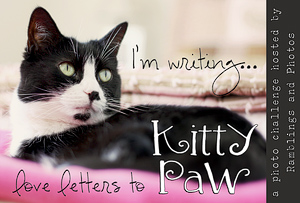
Wednesday, February 16, 2011
Share Your View: Breaking the Rule of Thirds
What have you discovered in the last week since the Exploring with a Camera: Breaking the Rule of Thirds post? Do you follow or break the rule of thirds most often? Link in below and let's take a look! I saved this image from Via dell'Amore for today because it was a perfect illustration of the rule of thirds along with the love-lock tradition I talked about in yesterday's post.
When you link in your examples of following and breaking the rule of thirds in the link below, and you have two chances to win. I'm giving away the "C is for Camera" notebook below and Tammy Lee Bradley of Bliss and Folly has joined in to giveaway a Vintage Camera trio - head over to her blog here to see how to enter for her fabulous giveaway. Thanks so much Tammy for sharing the love with us!
So, without further ado, please share your view! Link in below or click the thumbnails to see the other great examples shared so far. Thanks so much for participating! You can find the code for the Exploring with a Camera button here, if you want to share the love on your blog too.
Labels:
Cinque Terre,
exploring with a camera,
giveaway,
Italy,
lock,
love,
rule of thirds,
share your view
Tuesday, February 15, 2011
Via dell'Amore
Via dell'Amore is a nice little walk along the Mediterranean Sea from the towns of Riomaggiore and Manarola in the Cinque Terre. The story goes that the trail was built between the two towns as the railway was being built in the region, and it became a place for young lovers to meet to get away from the watching eyes of the townspeople. Now it is an enjoyable walkway along the sea, with benches to sit and enjoy the view.
The pathway is lined with love graffiti and covered with locks on every possible surface, including this little nook celebrating the famous walkway. The locks seem to be a tradition in Italy - near any body of water you will find locks hooked to bridge railings with little messages symbolizing the love of a couple. We first noticed this in Florence and have seen it many places in our travels, but no where are there more locks than along Via dell'Amore. They even sell locks if you want to participate in the tradition.
I was tempted to buy a lock for a keepsake but managed to resist and just capture a few images instead. I'm curious though - is the lock tradition something that is only found in Italy or does it happen in other parts of Europe? What are the traditions to celebrate young love in your country?
Monday, February 14, 2011
What's the Story?
This image caught my eye on the train traveling from Lisbon to Cascais, along the coast of Portugal. Originally, all I saw was the heart, just barely visible in the window from where I was sitting. Then the sun came out from behind the clouds and the message was broadcast inside the car. It's double graffiti, two surfaces for the painting of one!
I enjoyed all of the comments on yesterday's blog post Ti Amo. So many different perspectives were shared. If you have some time, take a quick read here to enjoy them too.
I thought today it might be fun to spark your imagination, and ask you to make up stories to go along with this love graffiti. What story do you see in this image? I can't wait to hear!
Ti Amo
Ti amo means "I love you" in Italian. Where there is graffiti in Italy, you often find this phrase mixed in. What is it about love that makes people want to declare it to the world in this fashion? It's as if it somehow makes it more permanent, less subject to the whims of life and human nature, if it is written down. Not just written down on a piece of paper either, but on a permanent structure, something that will be around a while.
I have to admit that my personal suspicion is that many of the romances with declarations of love in graffiti don't last. Call me unromantic, but grand declarations of love in spray paint are not what makes a relationship. To me, love is trust and honesty and acceptance, not words on a wall. It is support day in and day out, not flowers or candy on a specific day that calls for it.
While I love to capture these little message of love I find left about, I also wonder about the stories behind them. What brought someone to this point, and what happens after the ink dries and fades away? I hope the couples have found something more lasting than ink on a wall. I truly do.
Saturday, February 12, 2011
Sharing the Love
This week is "Sharing the Love" week on Mortal Muses, have you caught it yet? Each muse has selected a guest to take her place and share the love - it's been great fun! Come by and see all of our guests musing on the theme "Evidence of Love." My special guest is Jennifée, a wonderful photographer from Norway. I love her images! You can find her post here.
My wonderful muse friend, Tammy Lee Bradley of Bliss and Folly, is also sharing the love with me and with you too! She is offering a giveaway of a vintage camera trio on her blog when you link in to Exploring with a Camera: Breaking the Rule of Thirds. So there are two giveaways if you link in this time! Visit Tammy's blog to see the details of the giveaway, and then come link in here. Thanks so much to Tammy for sharing the love with us all!
In the last week, I've had three wonderful bloggers give the Stylish Blogger Award to me. I would like to thank them so much for sharing the love with The Kat Eye View of the World and Exploring with a Camera. Please stop by and leave them some love in the form of comments too!
Christine at Blue Elephant Photography
Beth at Rainbows'n'Frogs Photography
Karen at Out in the Fields
Today's "evidence of love" is from Via dell'Amore in Cinque Terre. If you ever wanted to find love-themed graffiti, this is the place. Enjoy your weekend!
Friday, February 11, 2011
The Protector
I'm not a big one for photographing monuments or recreating great photos of historic places. I like to focus in on the details, like this angel atop a building in Madrid. This angel is strong and confident. It looks like he takes his job of protection very seriously, ready to intervene at moment's notice. Wouldn't you all like to have a guardian angel like that? I certainly would!
PS - Do you see what I see in this photo? The Rule of Thirds!
Labels:
clouds,
Madrid,
rule of thirds,
silhouette,
sky,
Spain
Thursday, February 10, 2011
Exploring with a Camera: Breaking the Rule of Thirds
Welcome to another Exploring with a Camera! This week I'm exploring the "Rule of Thirds," looking at how this rule works and when to break the rule.
The Rule of Thirds is simple:
1. Divide your frame into thirds horizontally and vertically.
2.When framing your image, place your subject on one of the lines or intersections created by the thirds.
The Rule of Thirds is a guiding principle that can help you create interesting visual compositions. Calling it a "rule" is a complete misnomer - it's no more a rule than any other compositional principle. It is more of a suggestion, an idea to keep in mind while your create. Composition is a complex subject and relies on so many aspects working together, you can't just state one principle as a "rule" to be followed all of the time.
As I'm taking or cropping photographs, I don't actively think about applying the Rule of Thirds or any specific compositional principle. I use my eye to gauge what might be a good composition, which takes into account all of the different things going on in each individual photograph. I experiment with various compositions of the same subject. It is interesting for me to see, after the fact, what principles I might have unconsciously applied. This type of review helps me to understand where the principles do and don't work for me, which in turn will help me create better images the next time I go out and shoot.
If you are new to photography and trying to learn composition, thinking about the Rule of Thirds as you shoot or crop can help you see how it works and where you might successfully use it in your images.
I'm going to go through a number of examples that consider the Rule of Thirds to see whether an image follows the rule exactly, partially or not at all. It was an interesting exercise for me, because it was more difficult than I thought to define if an image partially followed the rule or broke the rule. Here are the definitions that I came up with:
- Following the Rule of Thirds: If the focal point (main subject) of the image falls exactly on a third line or intersection, it follows the rule.
- Partial use of the Rule of Thirds: If the focal point is close to a third line or intersection and has the appearance of following the rule, it partially follows the rule.
- Breaking the Rule of Thirds: If the focal point is nowhere near a third line or intersection and doesn't have any appearance of following the rule, it breaks the rule.
I've applied a grid divided into thirds to all of the images to help you visualize the rule applied to each example. You can learn how to apply a grid set to thirds in Photoshop Elements with instructions here, or Ashley of Ramblings and Photos posted a video for Photoshop (very similar to Elements) in her post here. If you use other software, do a web search for your software. (Note: When you apply a grid in software you won't see it when you save or print your image, it's only viewable while using the software. I had to work some special magic to create these examples showing the grid lines.)
Following the Rule of Thirds
In general, I discovered that I follow the rule most exactly with simple images. Images where there is a single subject and a consistent background are a great place to use the rule of thirds.
This abstract image from Burano is a good example of following the third lines. It is very simple, looking at the different textures and the light on the surfaces. Applying the Rule of Thirds makes an interesting composition out of what could be a very boring subject.
This image of flowers on the table is a great example of putting the main part of the subject at the intersection of two lines. The whole plant is the focal point, on the right vertical third line, but the flowers are the focal point within the focal point, and they are closest to the intersection.
The image of the path and trees is more complex, but the break in the trees falls on a third line exactly, creating a place for your eye to follow down to the people. Note that the people and horizon are not on the horizontal third line but are positioned lower, which helps emphasize the height of the trees. If they were exactly on the lower horizontal third line, it would have emphasized the people and the path.
I loved how my crop of this image came out exactly on the rule of thirds. The main subject, the woman walking out of the building, falls on an intersection of third lines. The reflections trail away along the horizontal line. There is a lot going on in this image to explore, but the rule of thirds works very well here.
Partially Using the Rule of Thirds
When I was writing my Find Your Eye lesson on composition, I discovered that some of my images have the appearance of following the rule of thirds, but the subject is really not on a third line or intersection. This is a great thing to discover! You can get great compositions using this principle without being precise.
This picnic table in this image has the feeling of following the rule of thirds to me, but it is not on the intersection. Again, balance of the elements in the image was more important than exactly following the rule of thirds.
My favorite happy image of flowers from Barcelona seemed like it followed the rule of thirds, but the focal point flowers are much more centered that I realized. It still works!
Along with the rule of thirds, you may often hear, "Put the horizon on one of the third lines." While that works in principle to help you create more interesting compositions, it doesn't always apply. This image from Monaco has much of the visual weight, from the bright white of the building, in the left third of the image. The horizon line doesn't need to be on the third line here for a good composition.
Breaking the Rule of Thirds
Many, many images have no relation to the rule of thirds and yet still have a great composition. Applying the grid lines you might see some elements that line up, but the subject and composition don't follow the rule of thirds at all. Just remember that the "rule" of thirds was meant to be broken!
The lead in photo, from my recent photo excursion with Kirstin, shows a composition that has nothing to do with the rule of thirds. One element happens to line up on a third line, but that is just coincidence. The image is composed mainly to highlight the lines and color.
The ceramic plaque in this photo below from Burano is more centered than on any third lines. The composition was created to capture the plaque in relation to the elements surrounding it, the window and the door, and their relative colors.
In one of my all time favorite images of Venice at night, I can't find any relationship to the rule of thirds.
Here we have a simple image on a plain background, which could be perfect for the rule of thirds, but I opted to fill more of the frame. The subject is off center for a more pleasing composition, toward the bottom third intersection, but that's about the only relationship to the rule of thirds.
The subject here is the trees and the patterns they make. None of the dominant trees fall on the third lines or intersections. The only relation to the rule of thirds is the horizon line happens to be near the bottom third line.
The subject in this image from Bologna is the bicycle, which is nowhere near an intersection or line. The interesting thing is that the more complex or detailed parts of the image, the visual "weight," fall in the bottom and right third parts of the grid. The image breaks the rule of thirds in terms of my definition of focal point, but the principle of thirds still influences the composition. This example shows composition is a complex topic!
Now, it's your turn!
I hope you've enjoyed this exploration into the rule of thirds. Now, it's your turn to take a look at your photos with an eye to this principle and see how it works or doesn't work for you. Link in your images and be sure to put a comment on whether the image follows, partially follows or breaks the rule. All images, archive or new, are welcome. I would love it if you would share my Exploring with a Camera button if you participate - you can find it here.
It's so much fun to give things away, I've started collecting fun little giveaway items in addition to my postcards. This time I'll be giving away this "C is for Camera" blank notebook I picked up in London. The winner will be drawn at random from those who link an image in below.
Thanks for participating! I can't wait to see what interesting images you have to show this time.
Labels:
composition,
exploring with a camera,
giveaway,
rule of thirds
Subscribe to:
Posts (Atom)

